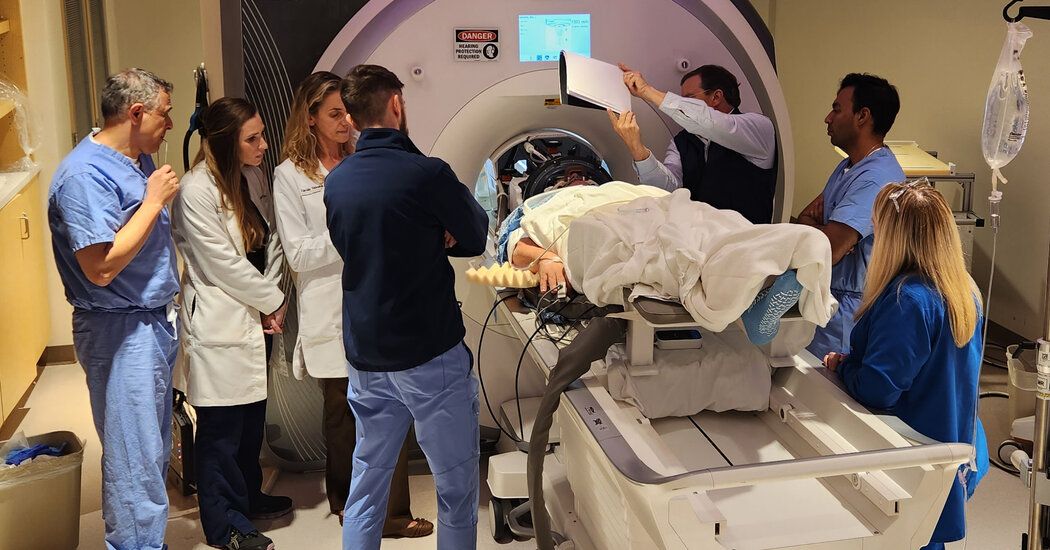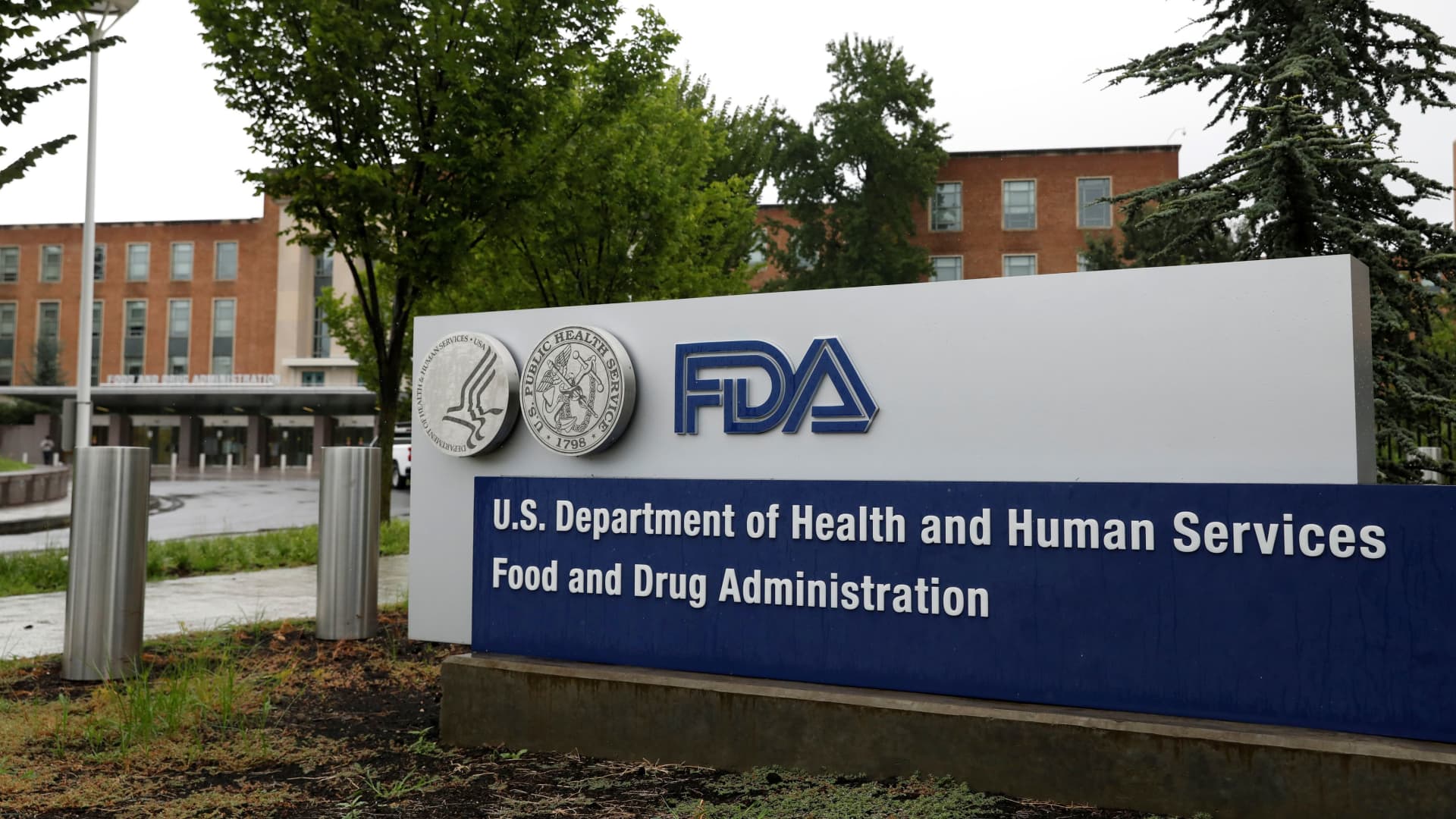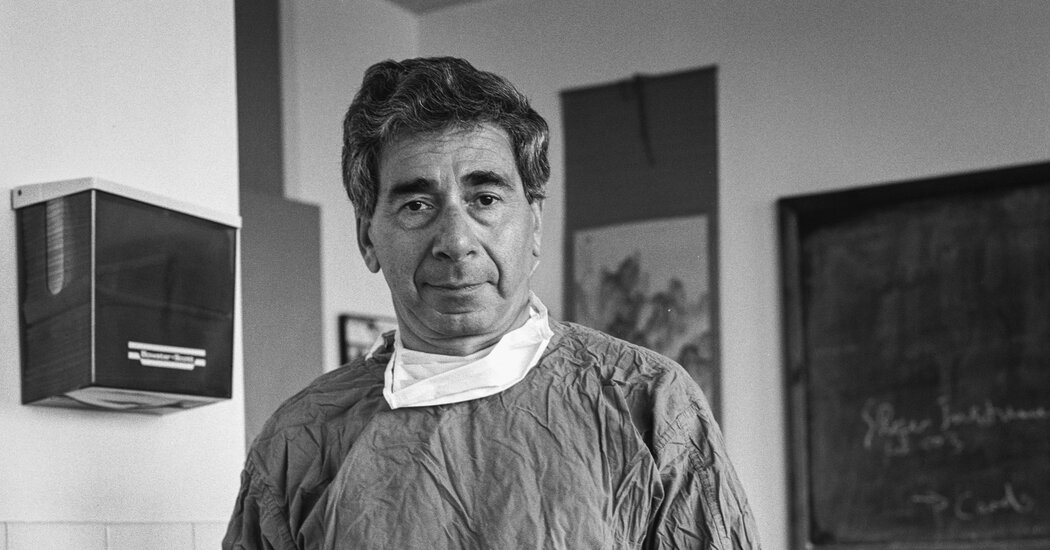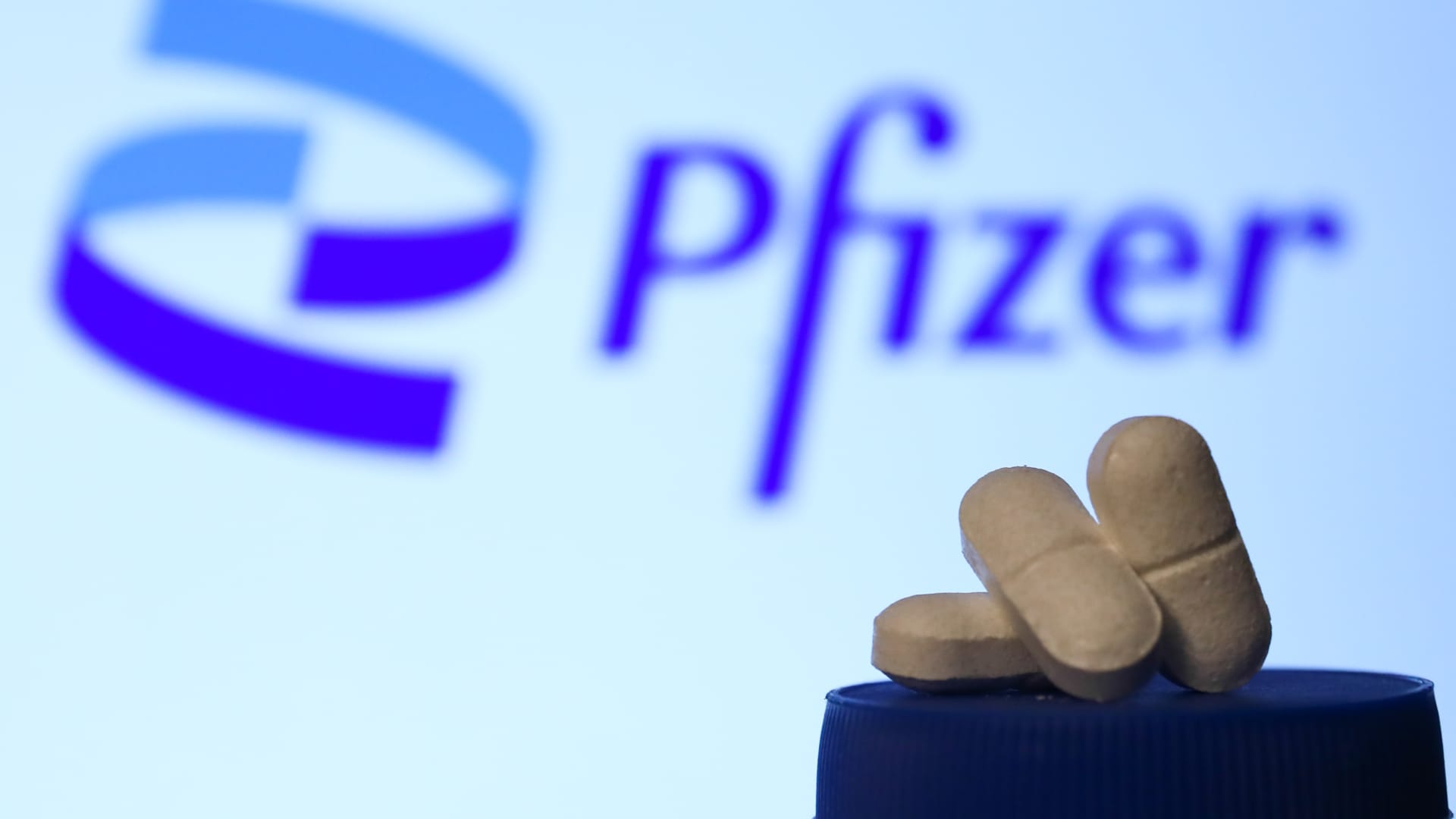There is a problem with the recently approved Alzheimer's drug, Aduhelm. It can remove some of the amyloid that forms the brain plaques that are characteristic of the disease. But most of the drug is wasted because it hits an obstacle, the blood-brain barrier, which protects the brain from toxins and infections but also prevents many drugs from entering.
The researchers wondered if they could improve that dismal result by trying something different: They would open the blood-brain barrier for a short time while administering the drug. Their experimental method involved using highly focused ultrasound pulses along with small gas bubbles to open the barrier without destroying it.
Researchers at West Virginia University's Rockefeller Neuroscience Institute reported their results last week in The New England Journal of Medicine. When the barrier was opened, 32 percent more plaque dissolved, said Dr. Ali Rezai, a neurosurgeon at the institute, who led the study. The group did not measure the amount of antibodies entering, which would require radiolabeling the drug, but in animal studies, opening the barrier allowed 5 to 8 times more antibodies to enter the brain, Dr. Rezai said.
The early-stage experiment, which was only tested in three patients with mild Alzheimer's, was funded by the university and the Harry T. Mangurian, Jr. Foundation.
It was a preliminary safety study (the first stage of research) and is not designed to measure clinical outcomes.
But when the results were presented at a recent meeting, “our jaws dropped,” said Dr. Michael Weiner, an Alzheimer's researcher at the University of California, San Francisco, who was not involved in the study.
The researchers said it was an innovative but difficult approach to a problem that Dr. Walter Koroshetz, director of the National Institute of Neurological Disorders and Stroke, considered one of the most challenging in the treatment of brain diseases: How are drugs introduced into the brain?
Antibodies like the Alzheimer's drug aducanumab, which Biogen sells as Aduhelm, are extremely expensive; Aduhelm's listing price is $28,000 per year. One reason for the high price, Dr. Koroshetz said, is that only 1 percent of antibodies injected into the bloodstream cross the blood-brain barrier.
However, finding a safe way to open that barrier took more than a decade. The researchers understood how the barrier worked, but opening it harmlessly meant keeping it open for a short time, due to its role in protecting the brain. It is a fragile part of the circulatory system and is not what many people imagine, based on its name.
“A lot of people think of it as something that wraps around your head,” like a turban for the brain, said Dr. Alexandra Golby, a professor of neurosurgery and radiology at Harvard Medical School.
Instead, the barrier is found at the ends of several important blood vessels that supply the brain. Upon entering the head, the vessels branch and divide until, at their tips, they form narrow capillaries with extremely tight walls. This barrier keeps large molecules out and allows small molecules like glucose and oxygen to enter.
The challenge was to open those walls without breaking the capillaries.
The solution turned out to have two components. First, patients are injected with tiny microbubbles of perfluorocarbon gas. The bubbles range in size from 1.1 to 3.3 microns (one micron is approximately 0.000039 inches). Low-frequency ultrasound pulses are then focused on the area of the brain to be treated. Ultrasound pulses generate waves in the fluid in blood vessels; Microbubbles expand and contract rapidly with waves. This opens the vessels without damaging them, allowing entry to the brain.
Microbubbles, Dr. Golby said, are routinely used in ultrasound imaging studies of the heart and liver because they light up and reveal blood flow. They are filtered from the body by the kidneys and liver.
“They have a twenty-year safety record,” he said.
For the experiment described in the new paper, the researchers used ultrasound on one side of the brain but not the other, for comparison, and then performed brain scans to check the results.
While the focused ultrasound method was successful as an experiment, not everything was rosy. The device was designed to send ultrasound to a small area, but in Alzheimer's cases, amyloid-containing plaque is throughout the brain.
“If you want to remove amyloid from the brain, you have to do it with a paintbrush, not a pencil,” Dr. Koroshetz said.
The researchers deliberately targeted areas of the brain involved with memory and reasoning, but it remains to be seen whether the treatment improves outcomes. That will require a larger study.
The Alzheimer's study is just one of several that involve opening the barrier to giving drugs to patients with a variety of brain diseases.
They are all in the early stages, and so far they all show that the method works; the medications that were blocked enter.
One group, led by Dr. Nir Lipsman, a neurosurgeon at the University of Toronto's Sunnybrook Research Institute, and his colleagues, opened the door to delivering a chemotherapy drug to the brains of four breast cancer patients whose cancer had spread to the brain. brain. The concentration of the drug, trastuzumab, quadrupled, they reported.
That work was funded by the Focused Ultrasound Foundation and sponsored by Insightec, which manufactures the ultrasound device used.
Dr. Lipsman and his colleagues have treated seven breast cancer patients so far and are expanding the study. They are also conducting preliminary studies in a variety of brain diseases, including cancer, Parkinson's and ALS.
Dr. Golby of Harvard Medical School and her colleagues have used the method to treat patients with glioblastoma, a deadly brain cancer.
One of the few chemotherapeutic agents that can enter the brain is temozolomide. But even this is blocked for the most part; only 20 percent overcome the blood-brain barrier.
So Dr. Golby's medical center and several others got permission from the Food and Drug Administration to conduct a clinical trial, using focused ultrasound with microbubbles to deliver more chemotherapy. It was funded by Insightec.
The patients did well, but the purpose of the study, which has not yet been published, was to evaluate the safety of the technique, not its effectiveness, he said.
“I would love to see a trial of a drug that doesn't normally reach the brain,” Dr. Golby said. There are many drugs that look great in laboratory studies but, he said, “completely fail” because they are blocked by the blood-brain barrier.
For now, however, questions remain, such as where in the brain to target therapies.
But, said Dr. Jon Stoessl, a Parkinson's expert and professor of neurology at the University of British Columbia, the method “eliminates the problem that historically has been a problem for anyone treating central nervous system disorders.”
Kullervo Hynynen, vice-president of research and innovation at Toronto's Sunnybrook Research Institute, is hopeful.
“If this works and is safe, it will open the door to a completely new way of treating the brain,” he said.












